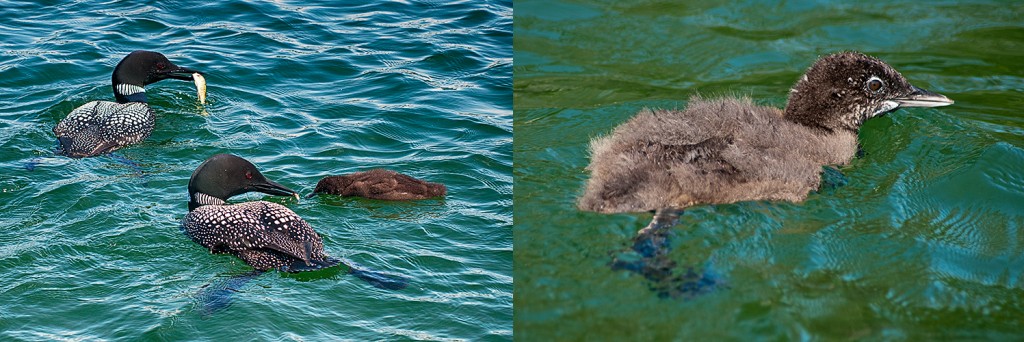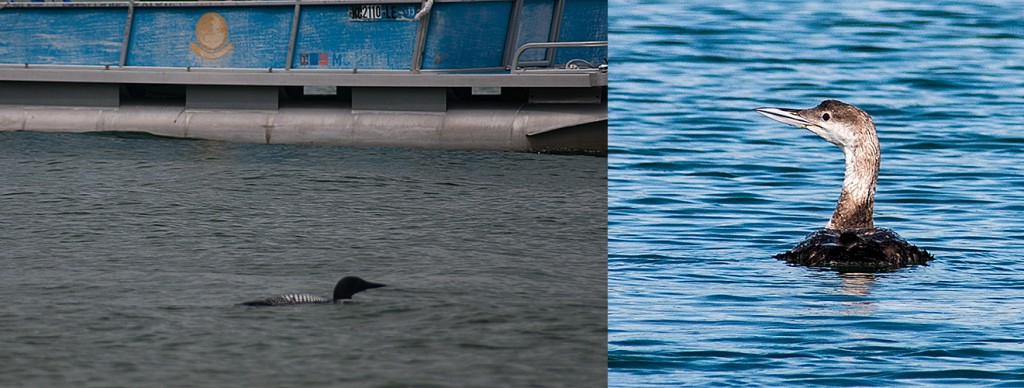No other bird signifies the wilds of northern Michigan better than the Common Loon (Gavia immer). When I wake up while camping along the shore of a northern lake and feel its eerie cry, I am connected to a primitive time and the primitive land.
However, I did not encounter my first loon at a pristine lake as I imagined but rather in the Detroit River. My dad and I were birding from the shoreline of Belle Isle on a dreary November day when I spotted a dull, grey, Common Loon in its winter plumage. Floating low in the water, looking unducklike, I knew immediately it was a loon. I was twelve years old and I still recall my excitement. Detroit smokestacks formed the background. My next loon was seen and heard the following summer at Lake Michigamme in the Upper Peninsula. This was the first time I heard its haunting call.
Common Loons breed in Michigan north of Saginaw. Our current population is 500-775 nesting pairs. While this is up from the estimated 220 pairs in the early 1980s, there are still thousands of suitable lakes without a nesting pair. Loons are diving birds with their legs placed toward their tails. This gives them trouble walking on land. It is rare to see a loon on land except at its nest. Loons return in early spring and it is not uncommon to see them on a lake the day after its ice melts. How they know that the water is open remains a mystery. Nests are built near the waterline and often touch the water. Nests are little more than bare ground when the eggs are laid. Both parents incubate the eggs and add grass, sedges, reeds, and other vegetation to the nest. My photograph of the nesting loon was taken with a long lens and then cropped down. The resolution makes this image too coarse to print but acceptable for a blog post. This nest was on an island and had a safe zone marked around it.
Both parents feed and defend the young. They flap their wings and call when a predator is nearby, finally diving if danger is too close. The pair that I photographed is on a lake with a nearby Bald Eagle nest. The loons’ behavior alerted me to the presence of the eagle several times. This pair nests on a lake with a lot of watercraft activity even though a suitable (at least suitable to my eyes) lake without boats or loons exists nearby. They will swim close to drifting boats seemingly unafraid, and merely dive to avoid jet skis.
Immature birds, once they are fledged, resemble winter plumage adults, and gain their adult plumage in their third year. Rarely seen in Michigan are the sub-adult (second year) plumage birds. One was on the lake where I photographed the nesting pair. Winter, immature, and sub-adult plumage Common Loons always have white near their eyes. It might not surround it but they always have a partial eye-ring. This character distinguishes them from other loon species.
We need to set aside bogs along lake edges as well as islands for nesting habitat. Manmade platforms placed at the water’s edge are also effective. If watercraft operators respect the loons’ space they can co-exist. I hope that loons will continue their recovery.
Copyright 2015 by Donald Drife
Webpage Michigan Nature Guy
Follow MichiganNatureGuy on Facebook




